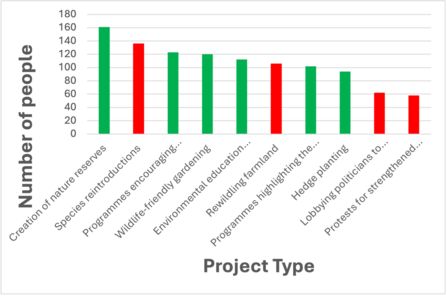
Hi, my name is Torben and I am currently a third year zoology student at Royal Holloway, University of London. I have recently completed my final undergraduate project, in collaboration with Surrey Wildlife Trust, under the title “How does Psychological Distance affect people’s willingness to donate to wildlife charities”.
I started off by exploring what factors lead people to make decisions about how they donate money to wildlife charities, with previous research all indicating that charities that use images of cute or iconic species often receive a greater amount of donations, due to the public being familiar with those species. However, I discovered that there was very little research on whether people’s distance from a conservation project influenced how they donated their money. Another factor I researched was whether people wanted to donate to projects that were deemed “controversial or uncontroversial”. An example of a controversial project would be a species reintroduction, and an uncontroversial project would be donating to a school education programme.
I first conducted a survey, asking 100 people in Surrey and 100 people in Lancashire, hypothetical questions about how they would donate an imaginary sum of money to different projects, either a near project, or a far project. I then also asked them to choose to donate to either a controversial project or an uncontroversial project. Once I had received all my participants data, I then conducted some statistical analysis to be able to understand if there were any significant differences between people choosing to donate more money to projects which were closer to them, or if distance didn’t have a major impact on how they chose to donate.
Finally I asked people to decided, if they were donating their own money, which projects they would choose to donate to, in order to establish whether the projects I had selected as controversial were seen as controversial by the public.


